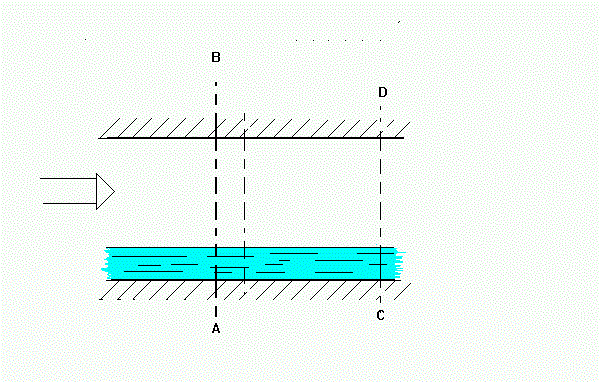Evaporative Cooling Towers (part 4)
Evaporation
The amount of evaporated water in the surface portion dA can be expressed through the relationship:
dL = kv (psat – pv) dA
where kv is the evaporation function index.
The following expression describes the amount of heat (QD) removed from water during evaporation:
dQD = r dL (3)
where r is the heat of vaporization.
In equilibrium conditions, there is a balance between the amount of heat lost due to fluid evaporation and to the quantity of heat (Qc) transferred to it by conduction:
dQD = dQc
which written in terms of temperature leads to the following expression:
r dL = G cp dt
while in terms of heat exchange surface, we have:
r [kv (psat – pv)] dA = α (tG,DB– tL1) dA (4)
Instead of the psat and pv pressure functions, it’s possible to calculate water quantity (dL) as a function of water contained in air or specific humidity (x); this gives an immediate idea of the amount of water vapor that is transferred to the air.
If pA and pV represent the partial pressures due to the above mentioned components, the total pressure of the air is pT = pA + pV (Dalton); since the steam is overheated and its behavior is very close to that of a perfect gas, it’s possible to apply the law PV = RT; meaning that for the two components, after the appropriate steps, it’s possible to describe water content in saturated air (xsat) as x.
PMV = molecular weight of water vapor = 18
PMG = molecular weight of the dry air »29
It’s thus possible to obtain the values of saturation and water vapor pressure, respectively.
The simplified expressions have been written taking into account that generally, and especially, in the temperature range where cooling towers operate, the values pv and psat are small compared to the value of the total pressure, where the constant c is a function of the total pressure and of the molecular weights of the components.
All this allows to rewrite equation (4), which after appropriate simplification, becomes:
r [c kv (x sat – x)] = α (tG,DB– tL)
i.e., introducing the overall coefficient of mass transfer K = c (kV) in relation to the water content:
r (x sat – x) = (α / K) (tG,DB– tL) (5)
then,
((tG,DB-tG,DB1) cp = (x1 – x) r (6)
If we consider a channel of infinite length, we must attend a full compensation between water and air to the complete saturation, i.e., for which continues to be valid equation (6), hence:
(t-θe) c’p = (X’’e – X) r (7)
when the temperature (θe ) and the relative water content at saturation level (X’’e) are at fixed values, i.e., values that are known and do not vary can be considered both the specific heat of air (c’p). The evaporation heat (r): equation (7) shows that the relationship between temperature and water content in air is linear.
The temperature measured in air saturated conditions, also called wet-bulb temperature or adiabatic saturation (tWB), is the limit temperature of water cooling.
The above content wants to illustrate that the cooling water temperature for cooling towers cannot be lower than the wet-bulb temperature. Therefore, the greater the difference of temperature between cooling water and wet-bulb temperature (approach), determines a smaller cooling tower.


